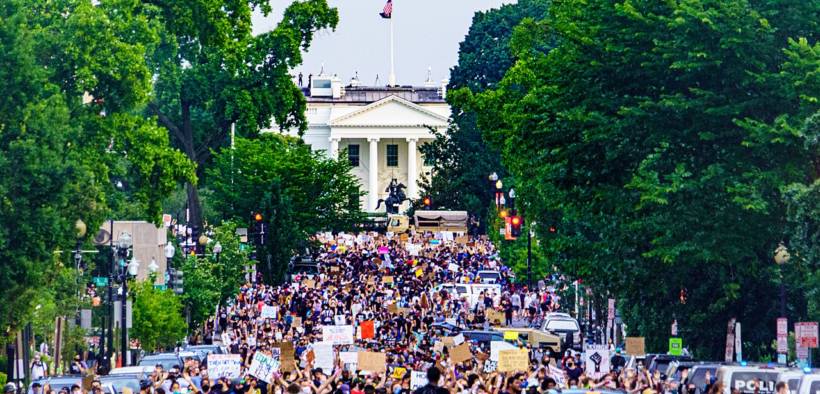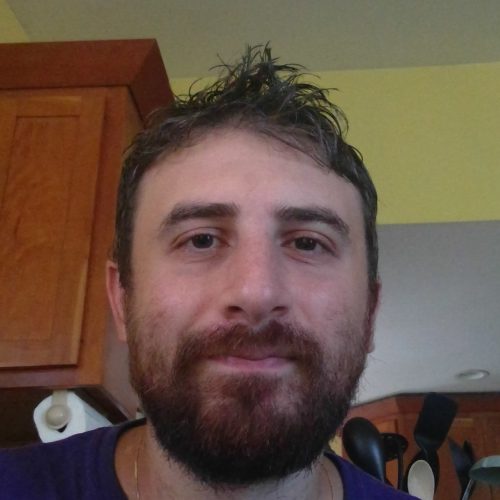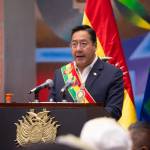On Black Lives Matter, George Floyd, and Challenging Viewpoints


Admittedly, I am sometimes reticent about opining on movements like Black Lives Matter and the types of protests set off by George Floyd’s murder at the hands of uniformed police. I feel that black activists should be in the lead on advancing the national conversation on issues relevant to BLM, and moreover, I realize I am not the most educated and certainly not the most qualified to speak on these matters, my experience grounded in middle-class, mostly white suburban life.
All these things considered, and under the premise that “silence is violence,” I feel as though I have to say something, to take a stand. Over the past two weeks, I have had numerous conversations with friends, family, and co-workers regarding the protests and riots that have swept America and have even manifested in other countries where disproportionate brutality against blacks is very real. Some of the responses were illuminating, to say the least, and suggest to me that we need to keep (or, in some cases, start) having uncomfortable conversations about race, class, politics, social issues, and every intersection therein.
The following are some thoughts on topics related to the wave of protests we’ve seen. These thoughts are mine, meaning I take full responsibility for them, though I acknowledge that people with more complete perspectives have helped influence my views as they currently stand.
George Floyd was murdered.
Not killed, murdered. Derek Chauvin had his knee on Floyd’s neck for close to nine minutes, with Floyd indicating at various points that he couldn’t breathe and numerous observers noting that Floyd wasn’t resisting (a common defense of police officers in situations like these which clearly doesn’t apply). Chauvin should’ve gotten at least a second-degree murder charge and the officers accompanying him likewise deserved their aiding and abetting charges for doing nothing while Floyd was being effectively choked to death.
I don’t give a shit about Floyd’s medical or criminal history.
So what if Floyd had underlying health conditions that contributed to his death. So what if he had a criminal record, and no, I don’t know anything about whether he does or doesn’t have one. The man had someone kneeing on his neck for close to nine minutes. That’s why he died.
I also don’t care if he was apprehended for paying with a counterfeit $20 bill. If Dylann Roof can shoot up a church in a racially-motivated attack and walk away with his life, it’s ridiculous to invoke Floyd’s reason for apprehension. George Floyd shouldn’t have died as a result of that encounter, full stop.
There’s no way Amy Klobuchar should be considered as a vice presidential nominee.
I feel like this goes without saying now, and even before the revelation she failed to hold Chauvin accountable for his role in prior incidents as Hennepin County attorney, Klobuchar was arguably a weak pick given her poor standing with voters of color and the idea that she wouldn’t have much to offer in the way of policy ideas to buttress a campaign in Joe Biden’s that has been largely devoid of specifics. With what we now know, picking Klobuchar for VP would feel downright suicidal.
Looting is not violence.
I get that people see looting and have strong opinions about it. I mean, who wants to have their things stolen or destroyed? Also, there’s the matter of not all businesses/structures being the same. If the target is, ahem, Target? I’m not very sympathetic. If people are looting a small business, especially a minority-owned business? That’s more deserving of sympathy.
To the extent that some individuals might be using these protests as an excuse to purely wreak havoc, I can’t say I support their actions. That said, looting is still a form of protest against an unjust system, one that has thus far resisted peaceful attempts to promote reform. Furthermore, property can be rebuilt or replaced. Human lives cannot. For this reason, equating looting with police brutality is a false equivalency and anyone wielding this argument in bad faith should be summarily dismissed.
Who has been responsible for most of the violence since these protests began? The police.
In video after video, the scene is set: Protests are peaceful until the cops come or decide to intervene. Whether it’s beating people with batons, pepper spray, rubber bullets, tear gas, or simply going out of their way to push, kick, drag or otherwise physically abuse civilians, uniformed police have frequently been among the worst agitators and perpetrators of violence of anyone involved. Even when there has been provocation, such as throwing bottles or rocks, often there’s a clear disparity of power and resources at work. These officers will be equipped with riot gear and weapons against otherwise unarmed protesters. If it comes down to it, that’s not a fair fight, and it’s not even close.
In one particularly egregious example, Aaron Torgalski, a member of Buffalo’s police department, intentionally knocked a 75-year-old man to the ground, whereupon he hit his head and started bleeding profusely. Not only did most officers not immediately rush to help the man, however, but some officers either walked past him or seemed to barely notice him lying motionless on the ground. To make matters worse, Buffalo PD tried to claim the man tripped and fell, when video evidence clearly indicates otherwise.
At this writing, the victim (who was white, not that it should matter, but just in case you were thinking this was purely about race) is thankfully stable but in serious condition. Regardless, this kind of unprovoked attack is reprehensible. It should be noted too that protesters aren’t the only ones who have felt the wrath of police brutality in the aftermath of George Floyd’s murder. Numerous journalists have been arrested, beaten, shot at, or otherwise intimidated by police despite clearly identifying themselves by their profession.
In one instance, CNN correspondent Omar Jimenez was arrested on live television by Minnesota state police. Sure, there were apologies following this incident, but it’s absurd that it even happened in the first place, and journalists shouldn’t have to be afraid of doing their job. These examples of police violence against journalists are part of a disturbing global trend of increased violence against journalists. So much for the constitutional guarantee of a free press.
No, Senator Cotton, don’t send in the troops
That President Donald Trump would seek to invoke the Insurrection Act to send the military to states and quell protests unsolicited is enough to give one pause. That he would be echoed by sitting members of Congress, meanwhile, is unconscionable.
Sen. Tom Cotton of Arkansas, who indicated on Twitter earlier in the week that he would support offering “no quarter” to rioters (which, to be clear, is considered a war crime), penned an editorial titled “Send in the Troops,” which ran in The New York Times Opinion section on June 3. That the Times would even run this piece railing against antifa and “insurrectionists,” let alone have its inclusion later defended by editorial page editor James Bennet, has prompted a sizable backlash from the public and staff alike, notably for its potential to put black people in danger.
Cotton’s editorial, which the Times eventually said in a statement did not meet the publication’s standards for editorials, has been labeled as “fascist” by several critics. Whatever you call it, Cotton should never have written it and The New York Times should never have published it. Shameful.
Antifa is not a terrorist organization
It’s not even a real “organization,” lacking formal leadership. Either way, anti-fascists haven’t been responsible for any killings here in the United States. Police forces, on the other hand, obviously have.
The “outside agitator” narrative is BS
One last thing: Claims that “outside agitators” were responsible for destruction and looting in various cities have long been used to undermine protest movements and were cautioned against by Martin Luther King, Jr.
They discredit the ability of protesters to organize effectively, they distract from the central issue of police brutality, they downplay the spiritual connection of these protests, they are designed to make protesters’ cause look unsympathetic, and on top of all this, they can be used to justify violence against protesters because they communicate the sense that these are not our fellow constituents who are being beaten and harassed. You are advised to regard this narrative with skepticism, especially if the source appears suspect on this issue.
As always with mass protests like these, the question of what to do next is a pressing one. To act like we haven’t tried to formulate answers prior to George Floyd’s death, though, obscures the efforts of activists to design and implement interventions meant to reduce deadly police violence. As part of Campaign Zero, a campaign created in the wake of Ferguson protests after Michael Brown’s killing designed to end police violence, its organizers have outlined eight ways police forces can modify their use of force policies to produce better outcomes.
The Police Use of Force Project prescribes actions to be taken against these failings of forces around the country:
- Failing to require officers to de-escalate situations.
- Allowing officers to choke or strangle civilians.
- Failing to require officers to intervene and stop excessive force.
- Failing to restrict officers from shooting at moving vehicles.
- Failing to develop a Force Continuum (which limits the types of force and weapons that are used in situational responses).
- Failing to require officers to exhaust all other reasonable means (before deadly force).
- Failing to require officers to give a verbal warning (before firing).
- Failing to require officers to report each time they use force or threaten the use of force (on civilians).
A review of 91 of the 100 largest cities in the United States revealed no police departments of those surveyed employing all eight interventions. Fewer than half required officers to de-escalate situations (#1), outlawed the use of chokeholds/strangleholds (#2), required officers to intervene to stop another officer from using excessive force (#3), restricted officers from shooting at moving vehicles (#4), required exhaustion of means before deadly force (#6), or reported all uses of force including threatening a civilian with a firearm (#8). Minneapolis, in theory, requires officers to intervene in cases of excessive force. Until very recently, it did not ban choking or strangling civilians. Whatever the rules at the time, on both counts, the officers culpable in George Floyd’s death failed their duties, demonstrating the notion guidelines must not only be created, but enforced.
As noted, restricting the use of force is just one part of Campaign Zero’s agenda, which also involves ending “broken windows” policing, community oversight and representation, independent investigation/prosecution, expanded use of body cams, training, an end of for-profit policing, demilitarization of police forces, and fair police union contracts. Calls for de-funding, if not abolishing police forces, have been widespread. In light of the short shrift community social programs seem to suffer in so many cities at the expense of soaring police budgets, the former, at least, seems overdue.
These are common-sense reforms. As protests continue across America, what is vital in preserving momentum for enacting real change is having the uncomfortable conversations we need to have and should’ve been having with those around us who don’t approach these matters from a progressive bent and who conceivably might be allies in the struggle to recognize that black lives matter. We can’t keep refusing to talk about politics and social issues because it is awkward or upsetting. We have to rip off the proverbial bandages and examine the deep wounds in our society for what they are if we ever hope to heal as one people.
George Floyd’s killer and his accessories have been charged. The winds of social change are blowing. Long after these riots and protests subside, however, and outside the scope of ending police brutality, there is much more work to be done to address systemic racism in our world and widening income and wealth equality that threaten to swallow the lot of us whole. This includes stepping outside our bubbles and challenging the views of those not yet committed to a better future for all.
We all have a part to play in this. Whose side on are you on?











